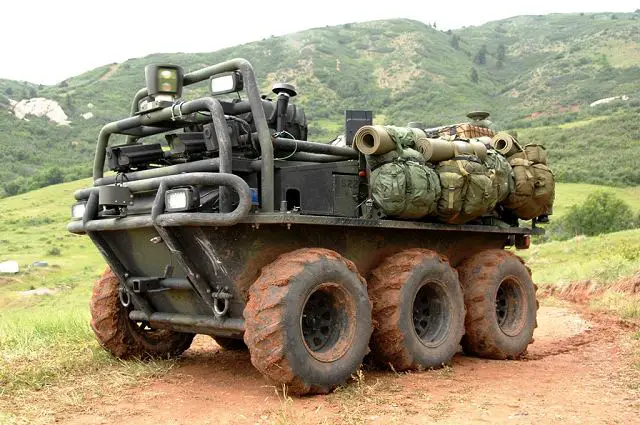Breaking news
U.S. army has purchased new line of autonomous vehicle the SMSS Squad Mission Support System 2907113.
| a | |||
Defense News - United States |
|||
|
|||
| U.S. army has purchased new line of autonomous vehicle the SMSS Squad Mission Support System. | |||
The
U.S. Army Rapid Equipping Force, through the Robotics Technology Consortium,
selected the Lockheed Martin Squad
Mission Support System (SMSS) to deploy to Afghanistan for a first-of-its-kind
military assessment. SMSS will deploy as the winner of the Project Workhorse
Unmanned Ground Vehicle (UGV) competition sponsored by the Army. |
|||
The largest autonomous vehicle ever to be deployed with infantry, the 11-foot-long SMSS can carry more than half-a-ton of a squad’s equipment on rugged terrain, easing the individual soldier’s burden, which can often exceed 100 pounds. “SMSS is the result of more than a decade of robotic technology development, and we welcome the opportunity to demonstrate this capability in theater, where it can have an immediate impact at the squad level,” said Scott Greene, vice president of ground vehicles in Lockheed Martin’s Missiles and Fire Control business. “The Army has tested the system’s capabilities in three domestic user assessments, and SMSS has been deemed ready to deploy.” As part of the three-month Military Utility Assessment (MUA), four vehicles and a field service representative will support light infantry in theater as the service evaluates how autonomous vehicles can support or ease the equipment burden for deployed troops. A fifth vehicle and an engineering team will remain in the U.S. for analysis and additional support. The Army plans to begin the Afghanistan assessment late this year, after a period of evaluations and training. “An in-theater assessment is the next logical step in the process of informing the requirements for the Army’s future squad-sized UGV developments,” Greene said. A fully-loaded SMSS is internally transportable on board CH-47 and CH-53 helicopters, providing new logistics capability to light and early-entry forces. The SMSS Block I variant, which will be deployed, has a range of 125 miles and features three control options: supervised autonomy, tele-operation or manually driven. The SMSS sensor suite allows it to lock on and follow any person by recognizing their digital 3-D profile (captured by the onboard sensors), and it can also navigate terrain on its own following a trail of GPS waypoints. In addition to a month-long MUA at Fort Benning, Ga., in 2009, SMSS has been selected for further evaluation as part of the Army’s Expeditionary Warrior Experiment (AEWE) Spiral G in November this year. While SMSS has already demonstrated its ability to reduce soldier loads and provide portable power, the November experiment will evaluate its ability to field a reconnaissance, surveillance and target acquisition mission equipment package. |
|||



























